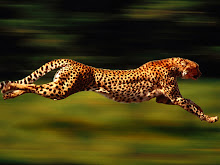
Stretching is critical to anybody who exercises or plays any sport. When you see a muscle-bound guy, you probably assume that he can’t move as well as an average person. Well, you’re half right. Muscle-bound people are among the most and least fleible e on the planet. It all depends on whether they stretched as part of their muscle-building probram. Keep in mind that muscle is a highly pliable tissue, and, within the realm of human possibility, it will do pretty much what you tell it you want it to do.
For best results, stretch every day, before or after your workout or between sets. My favorite is between sets because it keeps you acive, and it keeps you opened up so you can use your full range of motion for the weight-training exercises you’re performing during that workout. Stretching during workouts tends to counterbalance the muscle group you’re working. For instance, when training your chest, a great stretch is opening your arms, grasping a post or weight rack, and stretching your pecs before you perform your next set.
You can also stretch for 5 to 15 minutes first thing in the morning or before bedtime. Keep in mind that stretching is exercise, too. If you do a lengthy stretch session right before your work-out, you may find that a weight-training session is more challenging because you’ve already taxed your muscles.
Here is a rundown on some of the various types of stretching you can include in your program.
(1) Static Stretching
This is the most common type of stretching that you see in the gym and among the safest and most effective. It’s the stretch-and-hold version. You move into a stretch and maintain it for 5 to 10 seconds, “sinking” into it and allowing your body to open up. For best results, perform at least three reps of static stretches –you’ll find that you go deeper with each successive stretch.
(2) Active Stretching (= Movement Stretching)
Half-way between static and ballistic stretching lies active stretching, where you move smoothly between one stretch and the next. You go through the same range of motion as you do for static stretching, but you don’t hold the stretch. Many underuse this form of stretching, but it can help open tight muscles. You often see athletes perform this type of stretch right before performance. Think of sprinters bending over to open their hamstrings or pulling their feet up behind them to open their quads.
(3) Ballistic Stretching
This type of stretching is one of the most effective, as well as one of the likeliest to cause injuries. By adding dynamic force to your movement, you are able to take your range of motion beyond you static stretch position, helping to increase flexibility. Gymnasts often use ballistic stretches. My advice is to attempt this type of stretching only under the guidance of a qualified trainer.
(4) Passive Stretching
You see this a lot at the gym – a trainer stretching out a client. Passive stretching is when you relax and allow someone else to stretch you out. I think this type of stretching is great at the end of the workout as a way to relax and get a quick jump on the recovery process.
 (5) Yoga
(5) YogaYoga has become enormously popular, and it’s not only a great stretch but also a good workout. You might be surprised by how challenging it can be, especially if you’re a little tight. (It’s even more beneficial for those who are tighter than most.) Yoga can be performed at home with a tape or in a studio or gym as part of a class. You can also mix and match some of your favorite poses or stretches to create your own personal stretching routine.
(6) Pilates
Similar to but slightly different form Yoga, Pilates emphasizes control in movement, teaching you how to use your full range of motion properly as you tone and elongate your body. Joseph Pilates originally designed his moves and programs for injured dancers. Over the past decade, it has ballooned into one of the most popular fitness trends.
Here’s a quick stretching routine that hits virtually the entire body using a combination of the technique outlined above.
A. Hamstrings (Passive)
Lie flat on your back and lift one leg skyward. Have your training partner gently move that straight leg in the direction of your chest, and hold for several seconds. Repeat seven or eight times. Do the same number of reps using the other leg.
B. Waist (Active)
Stand up straight with your feet planted shoulder-width apart. Twist your torso to the right and then to the left. (That equals one stretch.) Repeat 20 to 25 times.
C. Upper Back (Static)
Stand several feet away form a support you can grasp with both hands after leaning forward at the waist. Arch your back and hold that position for 10 to 20 seconds to stretch the upper half of your back.
D. Groin (Static)
Sit with your knees bent, so the soles of your feet are flush with each other. Use your elbows to press down gently on your knees until you feel a stretch spreading through your groin. Hold for 10 to 20 seconds. Repeat five times, pressing your knees down a little farther each time, if possible.
E. Chest (Static)
Stand next to a support and raise one arm until it’s parallel to the floor and in the same plane as your shoulders. Shift one foot in front of the other and lean forward until you feel a nice stretch spreading across your chest. Hold this position for about 30 seconds, and then repeat using your other arm.




1 comment:
I use these tips all of the time. Most of the people go to the gym and start lifting. Many people forget about stretching and the benefits from it.
Post a Comment